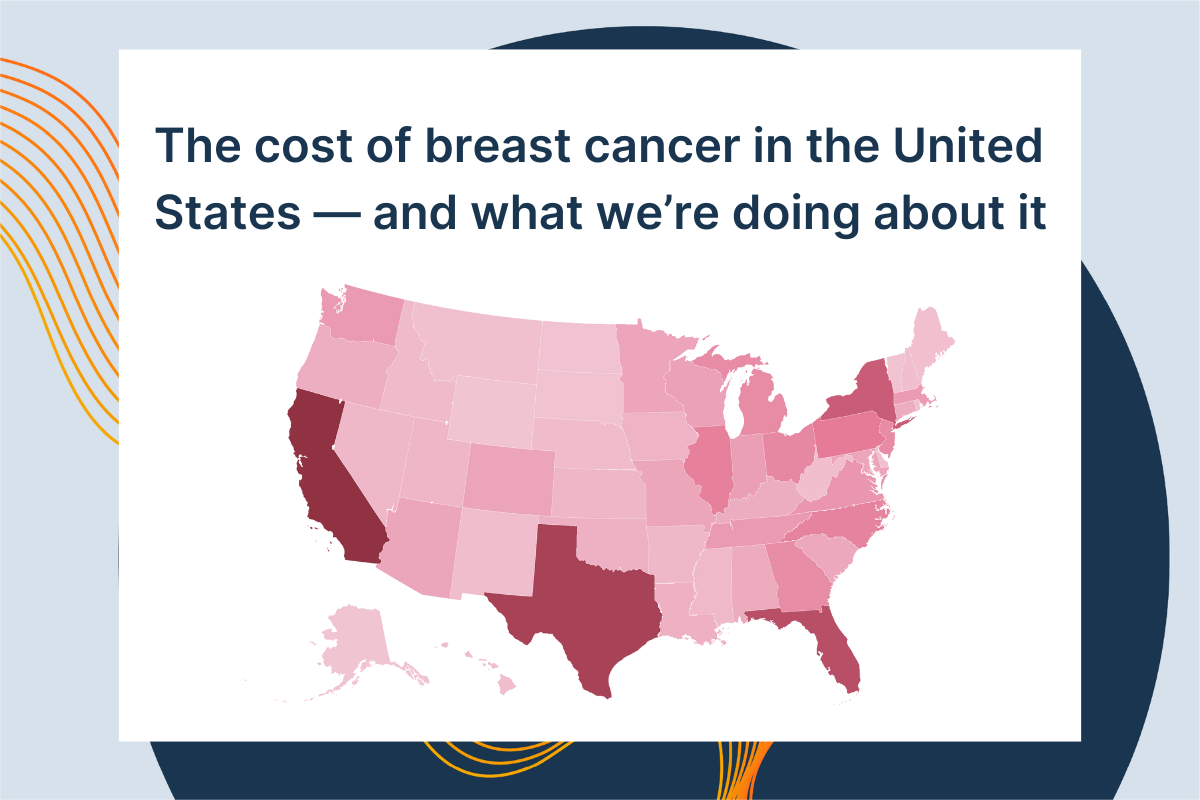Economic impact of breast cancer: $32.7B in medical costs in 2024

By Chris Chmura |
Breast cancer doesn’t just change the life of the person diagnosed – it ripples through families, friendships, and communities. Studies published by the American Cancer Society show one in eight women develops breast cancer in their lifetime, underscoring the urgency of early detection and advocacy. Beyond the emotional toll this disease takes, the financial burden is high.
Understanding the broader costs of breast cancer
A recent study by the National Cancer Institute reported the total annual medical cost in 2020 for breast cancer was $29.8 billion.
Curious to understand the broader economic impact of this disease, Chmura Economics & Analytics used that baseline to estimate breast cancer medical costs for 2024 at $32.7 billion. For the full methodology, read our blog. Of that amount, the estimated cost of medical services is $28.8 billion, and the estimated cost of prescription drugs is $3.9 billion.
Chmura also estimated the medical costs for states by considering the differences in state-level breast cancer incidence and treatment costs. Data from the Susan G. Komen Foundation show the breast cancer incidence rate was 129 per 100,000 women in the United States for the five-year average from 2016 to 2020. Rates varied dramatically across states — from a high of 140 for Rhode Island to a low of 111 for Nevada. Here in Virginia the rate was 126 over the same period. Some factors increasing the risk of breast cancer include age, obesity, use of alcohol and tobacco, and family history.
Chmura utilized a 2013 study by Florence Tangka on state-level cancer treatment costs to approximate the state-level cost differences. The study showed that Michigan reported the highest cancer treatment cost, 13% higher than the national average, and California and Arizona reported the lowest cost, 13% lower than the national average. The cancer treatment cost in Virginia is 2% higher than the national average.
California, Texas, and Florida see the highest costs by state for breast cancer treatment
The estimated cost for California reached $3.1 billion, followed by Texas at $2.7 billion, and Florida at $2.4 billion. Wyoming demonstrated the lowest estimated total medical cost at $51 million in 2024. Virginia came in at $868 million. Not surprisingly, states with larger populations show the highest total costs. When dividing the total medical cost by the number of patients, California drops to the bottom of the list, with the lowest estimated cost of $89,000, and Tennessee logs the highest per-patient estimated cost at $122,000. Virginia came in at $108,000
Unfortunately, a breast cancer diagnosis results in financial burdens for American families, even among patients with health insurance. Based on a recent study by Gracia Hager and Conti Rodin, the average out-of-pocket costs due to deductibles and co-insurance rates amounted to $1,502 per patient. Costs are much higher for women without public or private health insurance coverage.
The costs of breast cancer aren't just financial
Medical expenses are only one component of the total breast cancer burden placed on families and individuals. Breast cancer imposes a strenuous emotional and financial toll as many individuals must take time off from work to undergo intense treatment or support loved ones through care routines, often at the expense of labor productivity and income. The enormous cost of breast cancer calls for extensive education and outreach efforts. Early detection and intervention can play an important role in reducing financial and emotional stress for American families.
This column was originally published at Richmond Times Dispatch.
Subscribe to the Weekly Economic Update
Subscribe to the Weekly Economic Update and get news delivered straight to your inbox.